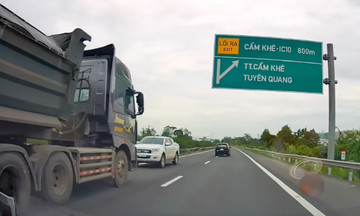By Ho Tan
Driving through floodwaters can significantly damage a vehicle. After navigating such conditions, it's crucial to inspect several key components to ensure safety and prevent further damage. Begin by thoroughly drying the interior to prevent mildew and unpleasant odors. This includes seats, carpets, and floor mats. Pay particular attention to areas where water might accumulate, such as under the seats and in crevices.
Next, check all fluids, including engine oil, coolant, brake fluid, power steering fluid, and transmission fluid. Water contamination can compromise these fluids, affecting performance and potentially causing damage. If any fluid appears milky or discolored, it should be replaced immediately. It's also vital to inspect the brakes. Floodwater can affect braking performance, so test the brakes carefully after driving through flooded areas. If the brakes feel spongy or unresponsive, have them checked by a mechanic.
Tires are another essential component to examine. Check for cuts, bulges, or embedded debris that may have occurred while driving through floodwaters. Ensure the tires are properly inflated to the recommended pressure. Finally, have a professional mechanic conduct a thorough inspection of the vehicle, especially the electrical system, which can be particularly vulnerable to water damage. This comprehensive check can identify any hidden problems and ensure the vehicle is safe to operate.











